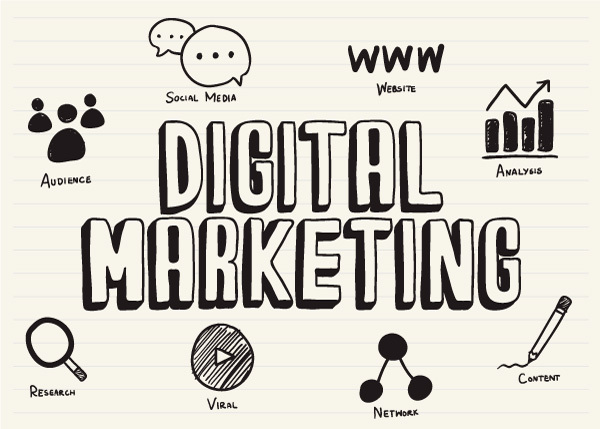
This item first appeared as a guest blog in Brand Equity, Economic Times
on April 6th,2023.
=======================================================
The digital marketing landscape keeps changing. Here are 5 changes that the Interskale team and I have experienced in recent times. Each of these impacts the day-to-day work we do.
1. Volatility among the ad platforms in use
The mix of ad platforms that are available and on the ascendant or decline keep changing.
Let’s take Google Ads, the largest player. Over the last couple of years, Google Ads has unleashed disruption via machine learning (ML). Firstly, it has introduced bidding strategies that use ML viz. Smart Bidding and Performance Max. Secondly, ML is being used to create and serve the most appropriate ads for each context.
With the above changes, the old style of managing Google Ads – that was around for over a decade – has gone. Selection and optimization of keywords is no longer required. Google Ads automatically optimizes keywords, based on the bidding strategy and marketing objectives set by the digital marketer.
This change at Google Ads is the biggest one ever and it has changed the task of the performance marketer quite a bit.
Meta, which with Facebook Ads and Instagram Ads, has the second largest ad platform, is planning to make a major move in AI in the form of launching creator tools in the short term and AI personas (targeting) in the long term, reports Marketing Dive 1. Zuckerberg has said he wants to ‘turbocharge’ Meta’s products with AI. Tech companies like Meta and Google cater to millions of ad clients, mostly small businesses. A big constraint for these small companies in getting more out of online advertising is ad creation. Only 40% of Meta’s 10 million or so advertisers use Reels, says The Economist. If Meta can provide AI-based tools that can create ads (with images and videos) without the need for specialist designers, it can lead to increased spending by the small clients. Such tools can also make creating content easy, leading to more users and more engagement for Facebook and Instagram. To quote The Economist, the day may not be far when a small retailer can create a custom ad using a voice command.
Let’s look at two other platforms. Data for the U.S. online market is presented here.
At Twitter, there is volatility after the takeover by Musk. There are feature glitches and outages and a perceived lack of stability of the business. Separately, there have been concerns about brand safety due to the growing amount of misinformation and hate posts.
Advertisers have pulled back. Twitter Ads was never a vital part of their online media plans. In the U.S., Twitter’s reach per week among adults is only 22% as against 63% of Facebook and 40% of Instagram. For media companies, reach is an important metric determining share of ad spend. Twitter’s low reach leads to it contributing only 1.2% of total online spends in the U.S., far lower than other major sites like Google, Facebook and TikTok. Twitter is also seen as a product only suited to brand advertising and not performance marketing, unlike Google and Facebook. The need of the hour is for Twitter to grow its reach and revamp its ad products.
I feature a fourth ad platform here viz. TikTok. This is banned in India. In the U.S., it has had phenomenal user growth and it has high usage per day, especially among the 18-24 year olds. It’s an excellent option for marketers to build reach among this age group. Its popularity has led to the introduction of Instagram Reels and YouTube Shorts and the take-off of short video formats in general. Short form video has taken over social media. 40 minutes of the 64 minutes that Americans spend on social media is spent watching video clips. However, as a recent article in The Economist2 explains, monetization of short video formats like TikTok and Instagram Reels is poorer than other ad formats. Firstly, there are fewer ads within videos as compared to other social media (one reason that there are fewer video ads is that many advertisers, especially the small ones, have yet to create ads in this format). Then, the clickthrough rate is lower too.
TikTok is facing barriers to operating in the U.S. and in Europe, due to regulatory pressure. In case TikTok’s usage does get curtailed due to this, there will be a shakeup among the various short form video products.
Impact on digital marketers
The above examples show the shifting sands that ad platforms are. No digital marketer can hope to wholly depend on one or two, nor is experience with one or two enough. Digital marketers have to be alert and constantly evaluate the mix of ad platforms to be used for their brands.
2. Running an e-commerce business is not everybody’s cup of tea
E-commerce is now a somewhat mature industry. There was a time when consumers were scared of transacting online, then there came a time (shortly around the time Flipkart went public) when every guy next door wanted to set up an e-commerce company, now neither of this is true. Only people with deep pockets are launching e-commerce businesses.
While the entry barriers remain low and are probably lower than ever before (with Shopify, UPI, logistics partners, Amazon and other marketplaces available), success i.e. creating a profitable e-commerce business isn’t easy. There has typically been a long gestation time (e.g. Amazon took 9 years to become profitable).
The business requires ongoing investments. E-commerce companies compete in large markets. There is the desire, rather the imperative to be no. 1, leading to pressures to invest in the business in diverse areas viz. product development, technology, infrastructure, distribution, customer acquisition, offline expansion, new product lines, markets, people etc.
Then there is impending competition. Millennials and tier 2 and 3 twins have taken to online transactions in a big way and the number of e-commerce users is slated to grow from 150-180 million in 2022 to 450-480 million in 2027, as per a Bain report3. This is leading to a FOMO mentality and a flood of investments by consumer companies in this D2C business. E-commerce players need to keep up their investment to counter competition from deep-pocketed players.
Thus, e-commerce is not traditionally a high ROI business. E.g. beauty e-tailer Nykaa in the first 9 months of FY 22-23 has had a gross margin of 44%, an EBITDA of 5% and a PBT of less than 1%.
Impact on digital marketers
As only serious players are now in the e-commerce business, digital marketers need to considerably up their game, their recommendations and execution, in organic, social and paid marketing, must be top class. For example, the e-commerce site must have top class UI/UX and a platform that can scale, it must have a wide and preferably a differentiated product assortment and top-class SEO.
3. Internet privacy issues and their impact on digital marketing
Google Ads is experimenting with Topics API, which works within a user’s browser and collects high-level interests of the user, such as fashion, food or travels. These broad groups can then be targeted by the ads.
Other than stray examples like Google Ads above, only sites which have access to large amounts of first-part data (think Amazon) can hope to escape the impact of the triple whammy on their ad revenues.
Impact on digital marketers
All companies who wish to run online campaigns will have to get smarter at collecting first party data. Can a website give something of value e.g a newsletter and collect user email IDs? For organizations having a physical footprint, can the sales teams routinely collect both customer and prospect email IDs and phone numbers at the point of sale? Digital marketers need to prepare their clients for this transition by pushing for such first-party data initiatives.
4. Generative AI
Today, with ChatGPT and GPT-4 – among other products – front and centre in the news, this topic needs little or no introduction. Like many other industries, AI will disrupt digital marketing too.AI has also been in a fair bit of use by Google Ads and is expected to be in big use at Meta Ads (see above).
The ChatGPTs and MidJourneys of the world now provide some nifty options to digital marketers. Copywriting, image creation, social media post creation and customer service/ FAQs are in for disruption.
One needs to understand that content creation as well as copy creation has been a resource intensive exercise, requiring skilled people. In digital marketing, having large quantities of quality content and ads is a big plus. And there are simply not enough skilled writers and visual designers available.
Generative AI helps overcome this barrier. A marketer skilled at creating the right prompts can generate content at scale, whether this be content ideas, blog posts, LinkedIn posts or others. In fact, writing effective prompts is akin to writing a good brief, something which has historically been part of every talented marketer’s skillset.
Proofreading, translation, data analysis, email marketing, market research, video scripts, targeting and SEO will also be changed forever.
Impact on digital marketers
If a digital marketer has not already created an account at ChatGPT or GPT-4 or any of the generative AI products and used it for any of your marketing tasks, you should. The more you delay the greater the danger that it will impact future performance for the clients and brands you handle.
5. Newbie marketers
The rapid growth in digital marketing has created a shortage of marketing talent. Most digital marketers lack marketing training and/or experience. Nor do most of the millions of organizations doing online advertising, SEO or social media, have in-house marketers worth the name.
Yet, marketing is one of the two pillars on which digital marketing rests, the other being the Internet medium. Without a strong marketing foundation, a lot of digital marketing work can be ineffective.
Here are some tasks marketers alone do well: writing effective ad briefs, brand-building, giving structured feedback on creative presented to them by their agency, getting the best out of their ad agency, taking customer feedback and conducting market research. These skills and more are lacking in the marketers today. How will they get the best out of digital marketing?
Impact on digital marketers
Digital marketers need to up their understanding of marketing and experienced digital marketers can double up, playing a marketing or brand advisory role for their clients.
Sources
1. ‘How TikTok broke social media,’ The Economist, March 25th, 2023
2. ‘Meta’s year of efficiency brings lofty AI ambitions,’ Marketing Dive, March 16, 2023
3. How India Shops Online, 2022 report, Bain & Company
=========================================================
P.S. Here is the original article, published in Brand Equity, Economic Times on
April 6th, 2023:
https://brandequity.economictimes.indiatimes.com/news/digital/five-ways-digital-marketing-is-changing/99282076

The blog’s extensive collection of articles covers an array of topics, ranging from SEO and social media marketing to content creation and analytics. The in-depth analysis and practical tips shared in each post provide immense value to readers
I agree